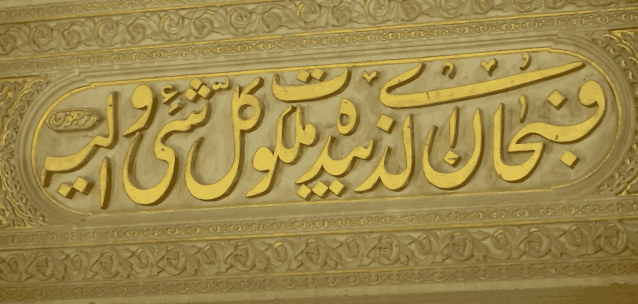Al-Rifa'i Mosque is located in Citadel Square, adjacent to the Cairo Citadel. Its name is derived from the Ali Abu Shubbak who is buried in the mosque. Now, it is also the royal mausoleum of Muhammad Ali's family.
Al-Rifa'i Mosque located on Salah al-Din Square (or Maydan al-Qal’a “Citadel Square”), al-Rifa’i Mosque was built in the nineteenth century to Equivalent its fourteenth-century neighbor, the mosque of al-Sultan Ḥassan. The mosque gets its name from the tomb of Ali who was known as "Abu Sheibak", he was the grandson of imam Ahmad al-Rifa’i. when the mosque was completed, it was imputed directly to Ahmad al-Rifa’i who founded the Rifa’i Sufi order. Although he was never buried here, the mosque witness a joyous annual Sufi celebrations commemorating his birth.
The original structure was a Fatimid mosque, which was then transformed into a shrine for Ali Abu Sheibak. Finally,
Hoshiyar Hanim, the mother of Khedive Ismail, commissioned the current design of the mosque and put in charge of the construction the architect Hussein Pasha Fahmi. Part of the plan was to have a mausoleum for the family of Muhammad Ali as part of the extension, which was made by imported building materials from Europe, such as Italian marble. The construction has stopped for years until it was completed in the region of Khedive Abbas Helmi II in 1330Ah\ 1912 AD.
Al-Rifa’i Mosque’s architectural design is as interesting as its construction history. Visitors stand in awe of the detailed decoration of the outer walls and massive columns of the outer gate. The minarets are distinguished by their beauty and elegance. Additionally, cement was used in the construction of the mosque for the first time in any of Islamic monument in Egypt, signaling the transition into modern times.
While a section of the mosque is dedicated to prayers, another is reserved for the members of the family of Muhammad Ali Pasha, which was in power from the early nineteenth century until the 1953, when the modern Egyptian republic was born. Khedive Ismail and his mother Hoshiyar Kadin, as well as Kings Fuad I and Farouk, the last two rulers of the Muhammad Ali Dynasty, are buried here, all enshrined in elaborate tombs. The mosque contains the burial chamber of Muhammad Reza Pahlavi (d. 1400 AH/1980 AD), the last Shah of Iran.
The original structure on the site was a small 12th century Fatimid-era mosque, known as the Al-Dakhirah Mosque. But later, the grandson of Ahmad al-Rifa'i, Ali Abu Shubbak al-Rifa'i, was buried within it, and the place was converted into a Zawiya for the Rifa'i tariqah. This Zawiya became known as the Al-Bayda Zawiya, and it not only contained the tomb of Ali Abu Shubbak, but also included the tomb of another Sufi mystic, Yahya al-Ansari.
The present structure of the Al-Rifa'i Mosque was constructed in two phases over the period between 1869 and 1912 when it was finally completed. It was originally commissioned for Hoshiyar Qadin, the mother of the 19th century Khedive Isma'il Pasha to expand and replace the old Zawiya. Hoshiyar ordered an extensive renovation of the zawiya, and so the original structure save for the graves of Ali Abu Shubbak and Yahya al-Ansari was demolished. The new structure was also intended to contain the burial place of the Khedive family.
The original architect was Hussein Fahri Pasha, a distant cousin in the dynasty founded by Muhammad Ali of Egypt in 1803, but he died during the first phase of construction, and work was halted after the abdication of Khedive Isma'il Pasha in 1880. Hoshiyar Qadin herself died in 1885, and work was not resumed until 1905 when the new Khedive, Abbas II of Egypt, ordered its completion. Construction work was supervised by the Hungarian architect Max Herz, head of the Committee for the Conservation of the Monuments of Cairo.
The two minarets of the mosque were distinguished by grace and beauty, and it is worth noting that it was the first building that used cement in its construction in the history of Islamic architecture and that was an indication of the transition to the modern era.










No comments:
Post a Comment